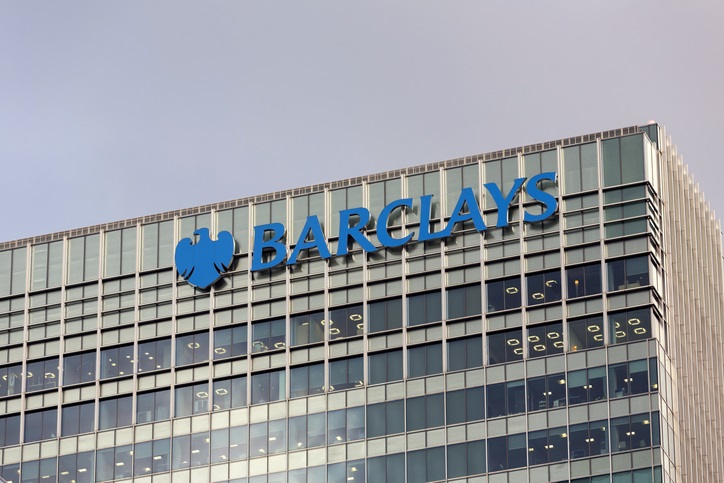Is Barclays’ bounceback a turning point for high street banks?
The bank’s recent performance offers a glimmer of hope in a turbulent year for the sector.
23rd October 2020 10:34
by Richard Hunter from interactive investor
The bank’s recent performance offers a glimmer of hope in an otherwise turbulent year for the sector.

Barclays (LSE:BARC) has opened the quarterly reporting season in some style for the UK banks, with a marked improvement to many of its metrics.
The credit impairment charge of £608 million brings the cumulative figure to £4.3 billion, although this is a significant decline of 63% to the previous quarter. While there had been some concerns around a higher figure given the recent experience of its US counterparts, the bank is guiding that impairment charges for the second half of the year will be materially lower.
This is a positive step which suggests that Barclays is comfortable with the amounts it has set aside so far, notwithstanding any further economic deterioration.
The bank’s contribution to the oiling of the economy also continued apace, with a further £2.5 billion of Covid-19 support to UK businesses, bringing the total so far to some £25 billion. It also waived of fees and interest to the tune of £100 million and a cumulative 640 000 payment holidays.
- The Week Ahead: Reckitt, Unilever, Netflix, Tesla, Barclays
- Chart of the week: are ailing UK banks poised to rebound?
- Shares round-up: bad news for Lloyds Bank stock, but SSE shines
As expected, the Markets unit within the Corporate Investment Bank propelled a 24% increase in income, offsetting slight weaknesses elsewhere.
Total group income of £5.2 billion comfortably exceeded expectations, as indeed did both the pre-tax profit number of £1.15 billion (expected £507 million) and quarterly net profit of £611 million (£201 million).
Meanwhile, the capital position has improved further, which should bode well for a potential reintroduction of the dividend in the new year at the time of the full-year results.
The capital cushion rose to 14.6%, an improvement of 0.4% on the previous quarter, while the liquidity pool also rose to £327 billion and the liquidity ratio remains high at 181%.
But as ever there are some red flags for the bank to address.
Consumer Cards and Payments suffered an income decline of 21%, largely driven by lower balances and margin compression, while the ongoing and historically low interest rate environment contributed to a 12% drop in income for Barclays UK.
In terms of outlook, while there were some positive noises on lower bad debt provisions, general economic prospects are uncertain and any downturn would inevitably hurt performance for the latter part of the year.
- Market snapshot: banking sector results and stimulus worry
- Are Lloyds Bank and Tesco on list of best value stocks to buy?
- Take control of your retirement planning with our award-winning, low-cost Self-Invested Personal Pension (SIPP)
At the same time, one of the key metrics, the cost/income ratio, rose slightly in the quarter to 59%, although the figure remains better than a year ago (62%) with the bank anticipating broadly flat costs to come.
In all, and given an increasingly demanding environment, this was a strong quarterly performance, even if it does not reverse the damage suffered in the year so far.
The share price has inevitably tracked the difficulties in both performance and prospects, and has fallen 37% over the last year, as compared to a decline of 20% for the wider FTSE 100. In the year to date, the shares have fallen by 42%.
Even so, with most metrics having exceeded expectations and with a seemingly firm hand on the tiller, Barclays has provided a glimmer of hope to what has been a turbulent time for the banks.
With its diverse business model both by product line and geography, it is well-positioned for the impending challenges and has become a preferred play within the sector, as the market consensus has recently improved to a strong ‘buy’.
These articles are provided for information purposes only. Occasionally, an opinion about whether to buy or sell a specific investment may be provided by third parties. The content is not intended to be a personal recommendation to buy or sell any financial instrument or product, or to adopt any investment strategy as it is not provided based on an assessment of your investing knowledge and experience, your financial situation or your investment objectives. The value of your investments, and the income derived from them, may go down as well as up. You may not get back all the money that you invest. The investments referred to in this article may not be suitable for all investors, and if in doubt, an investor should seek advice from a qualified investment adviser.
Full performance can be found on the company or index summary page on the interactive investor website. Simply click on the company's or index name highlighted in the article.